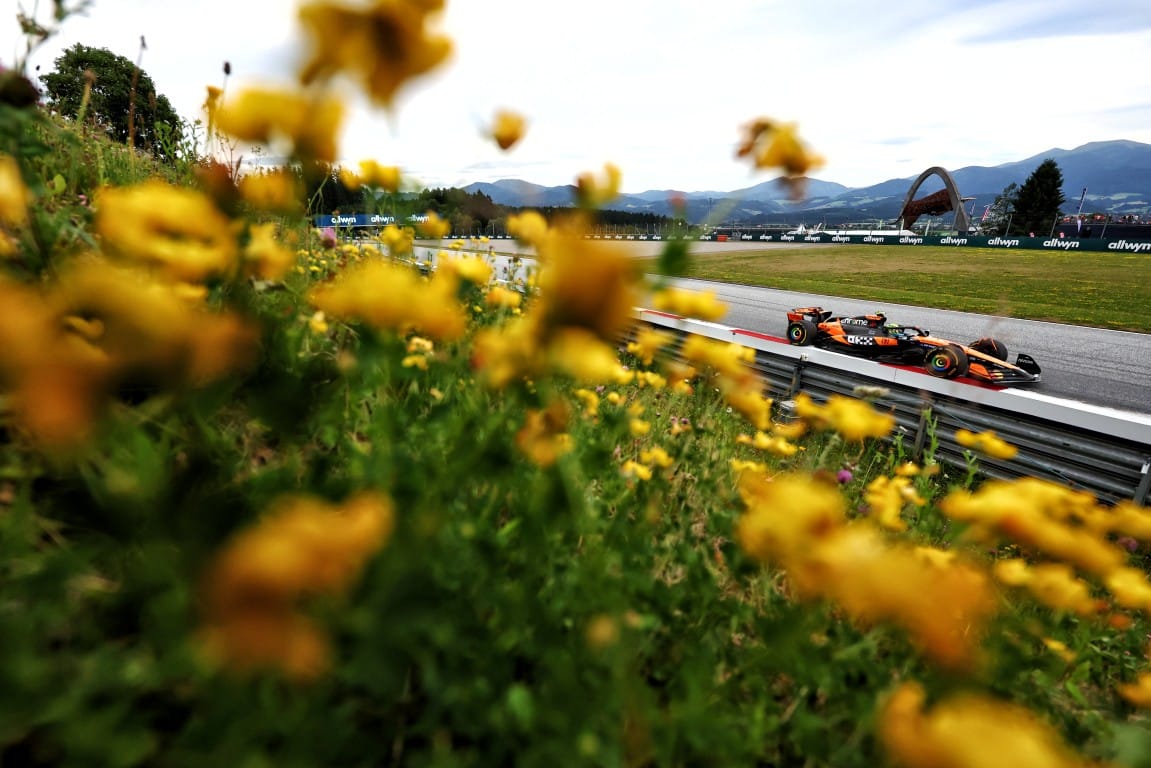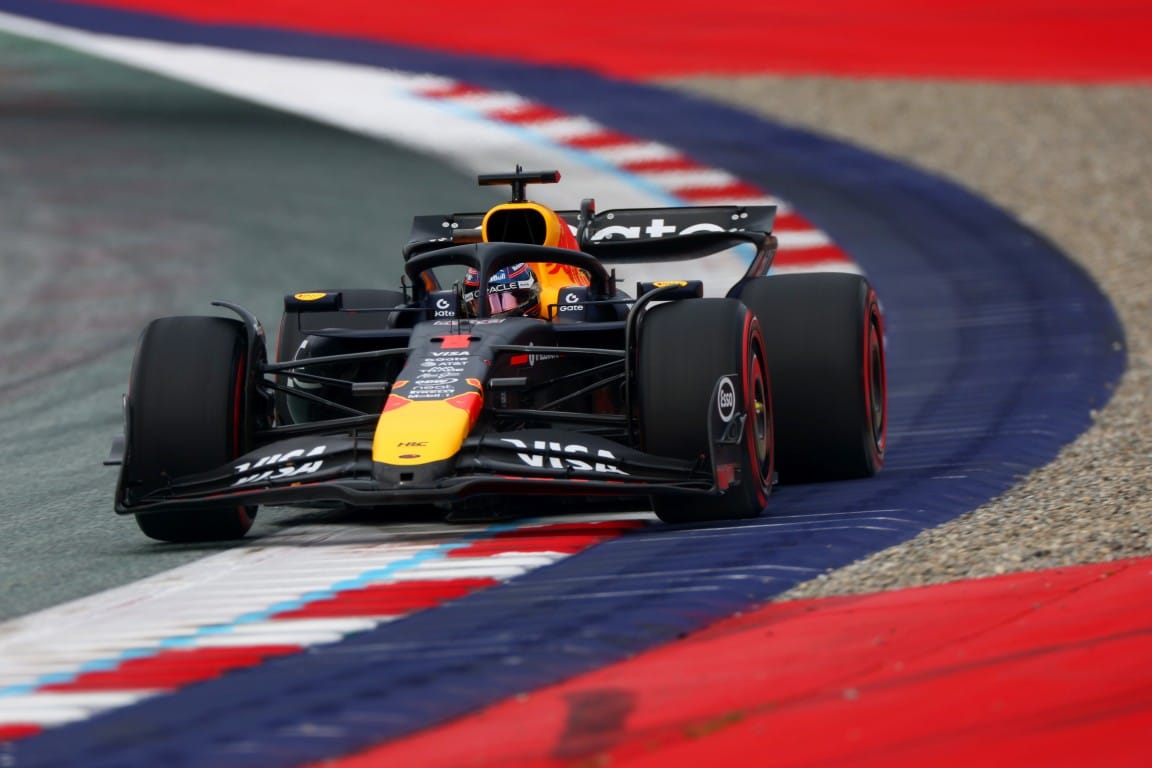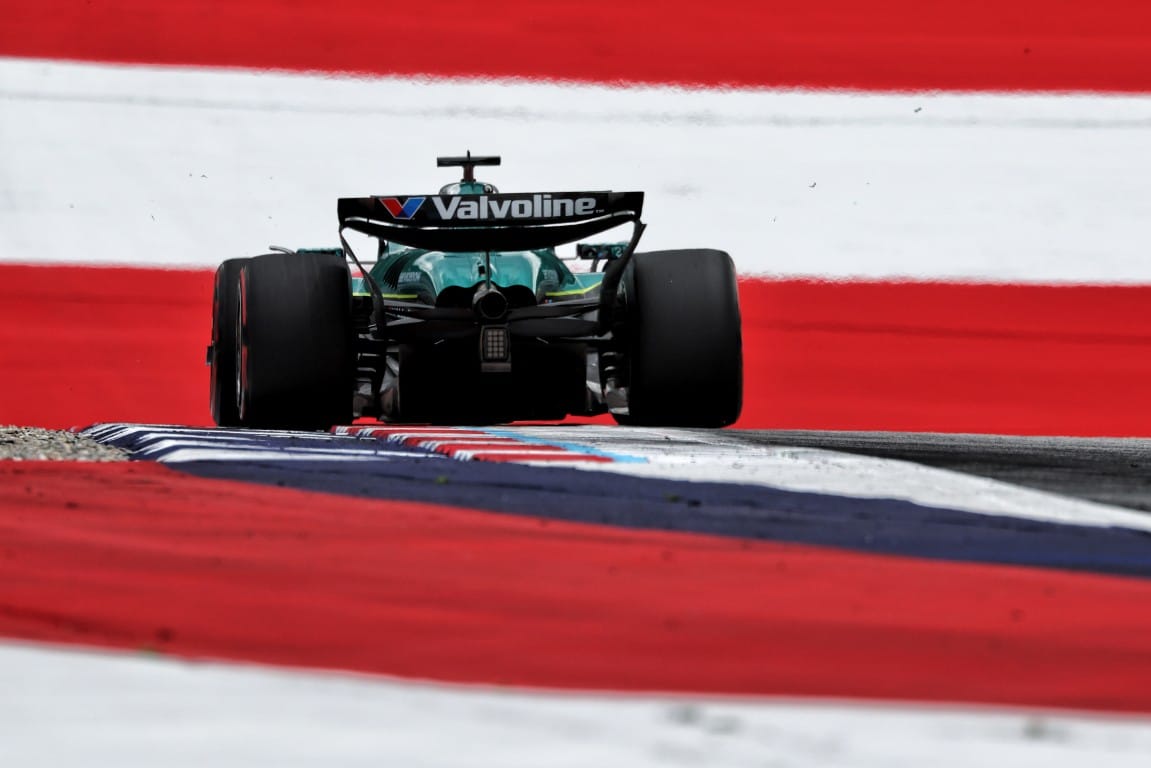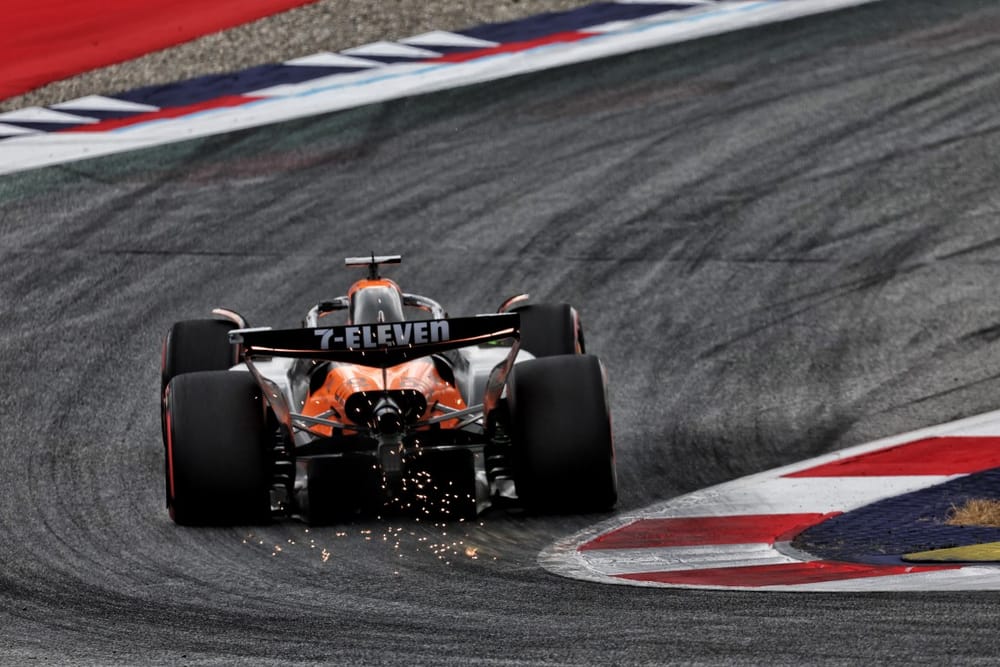The Red Bull Ring is a supremely suitable track for the strengths of the McLaren MCL39 – lots of long corners, some of them interconnected. Looking only at FP2 it looks like that suitability could be set to be converted to dominance.
But that paints probably an exaggerated picture, as Lando Norris, comfortably fastest in both single-lap and high-fuel running, explained: “Yeah, as always we are very quick in FP2. Others will catch up tomorrow, as they usually do. It’s not going to be quite as easy as we made it look today.”
McLaren’s policy of running quite aggressively in FP2 to fully stress the tyres tends to flatter their advantage. Norris’ gap of 0.3s over third-fastest Max Verstappen on such a short lap isn’t the full story. There is some power unit offset in that gap.

However, the Red Bull loses around two-thirds of that margin in the combined Turns of 6-7, which is little to do with power modes and everything to do with McLaren’s medium-speed grip advantage.
Oscar Piastri was a solid second-fastest in both low and high-fuel running, but the cars were not running identical specs, as the team fine-tuned its latest updates. “We were doing different tests between the two cars,” confirmed Norris.
Norris set the pace after having missed FP1 entirely, as his car was being driven by rookie Alex Dunne - who caused something of a sensation by lapping within 0.1s of Piastri and going fourth overall in his first participation in an F1 session.

“It was quite a straightforward day,” Verstappen reported. “We didn't have any big, big issues. Just a bit too much understeer in the car, short run and long run. So that is something that we have to try and get rid of.” Although Verstappen squeezed a good low fuel lap out of it, he did his long run on the soft tyre and so is offset to most who ran the more suitable medium.
Mercedes’ performance was slightly puzzling - fastest in FP1, struggling a little in FP2. George Russell reckons the latter is probably more representative of where they are really at. Nonetheless, Kimi Antonelli’s FP2 long run was the nearest anyone came to matching McLaren.
Ferrari, with its new floor, appeared to be scratching a little - although Charles Leclerc’s long run was encouragingly competitive. Like Norris, he missed FP1, handing his car over to Dino Beganovic, but also like Norris, this was not reflected in any lack of performance in FP2.
Lewis Hamilton was struggling after an FP1 compromised by a gearbox issue. Getting the PU to cool adequately for long enough to allow him full access to the battery – all while keeping the tyres in their temperature window – was proving a tricky balancing act.

Aston Martin’s Lance Stroll did a randomly quick FP2 lap to go P4 in the headline times but the team was trying to balance out the conflicting demands of race and qualifying pace. These experiments were probably behind that lap. In the high-fuel running, he and Fernando Alonso were a few tenths adrift of Williams.
No-one would be too surprised to see McLaren dominate qualifying. But a classic Verstappen taking it to the McLarens sort of qualifying – like Suzuka, Jeddah or Miami - could also be in store. Anything outside of those two scenarios would be rather more of a surprise.
Long run averages
Norris - 1m09.64s (11 laps, medium)
Piastri - 1m09.70s (9 laps, medium)
Antonelli - 1m09.78s (13 laps, medium)
Leclerc - 1m09.80s (8 laps, medium)
Hamilton - 1m09.82s (3 laps, soft)
Hamilton - 1m09.86s (2 laps, hard)
Verstappen - 1m09.90s (5 laps, soft)
Lawson - 1m09.98s (13 laps, soft)
Sainz - 1m10.04s (11 laps, hard)
Russell - 1m10.07s (13 laps, medium)
Albon - 1m10.20s (16 laps, hard)
Stroll - 1m10.23s (10 laps, hard)
Alonso - 1m10.56s (10 laps, medium)
Tsunoda - 1m10.59s (13 laps, medium)



